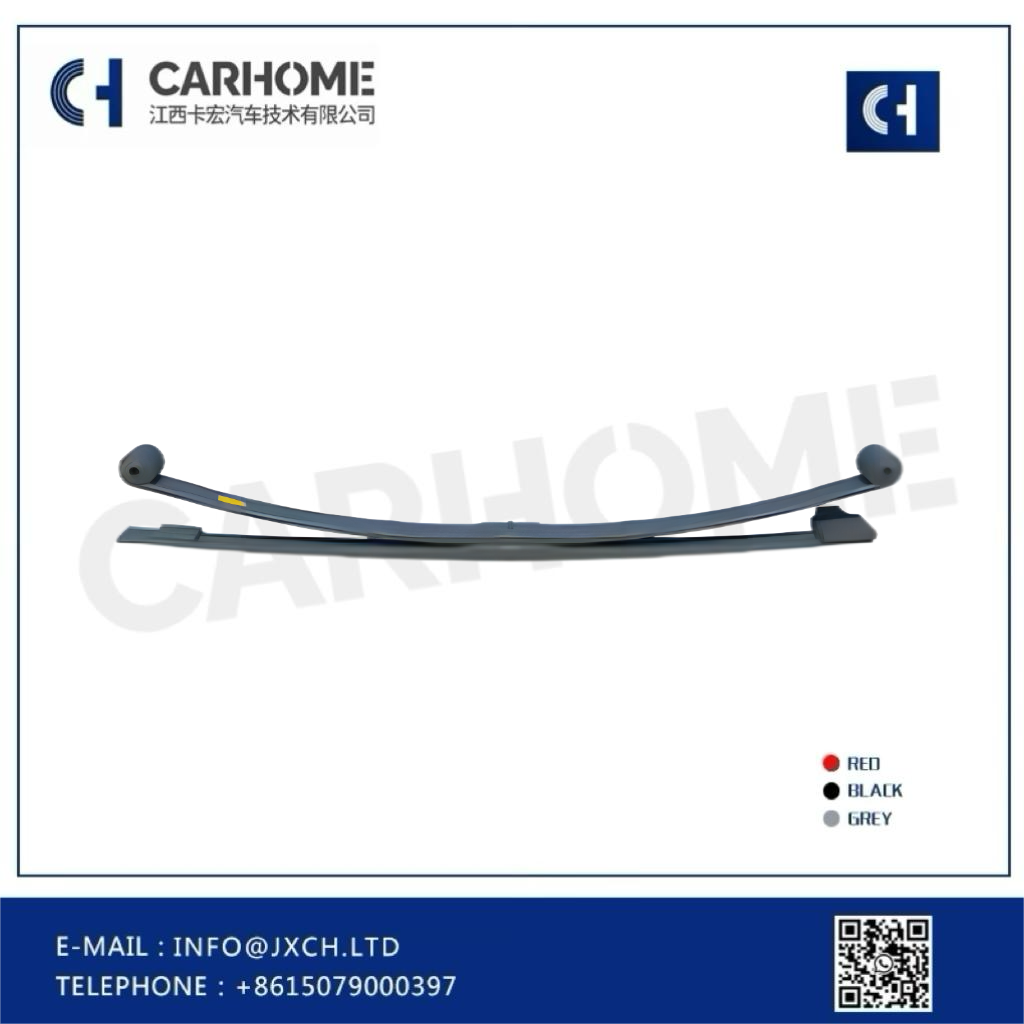Welcome To CARHOME
4×4 Pickup Leaf Springs for Pickup Truck Rear Suspension
Detail

The leaf spring is suitable for 4x4 Pickup
● The item total has 5 pcs, the raw material size is 60*7 for first 、second and third leaf, the fourth and fifth leaf is 60*12
● Raw material is SUP9
● The main free arch is 170±6mm, and the helper free arch is 5±3mm, the development length is 1200, the centre hole is 8.5
● The painting use electrophoretic painting
● We also can produce base on client's drawings to design
Pickup 4x4 leaf springs part number:
| SN | APPLICATION | OEM NUMBER | SN | APPLICATION | OEM NUMBER |
| 1 | HINO | 48150-2341A-FA | 11 | TOYOTA | 48110-60062 |
| 2 | HINO | 48220-3360B-RA | 12 | TOYOTA | 48210-35651 |
| 3 | HINO | 48210-2660 BHD | 13 | HINO | 48110-87334 FA |
| 4 | TOYOTA | 48210-35830 | 14 | TOYOTA | 48110-35230 |
| 5 | TOYOTA | 48210-33830 | 15 | TOYOTA | 48210-OK010 |
| 6 | TOYOTA | 48110-60062 | 16 | TOYOTA | 48210-35170 |
| 7 | TOYOTA | 48110-60160 | 17 | TOYOTA | 48210-35670 |
| 8 | TOYOTA | 48210-60240 | 18 | TOYOTA | 48210-26340 |
| 9 | TOYOTA | 48110-60250 | 19 | TOYOTA | 48210-35120 |
| 10 | PICKUP 4X4 LEAF SPRING | MITS018C | 20 | PICKUP 4X4 LEAF SPRING | MITS018B |
Applications
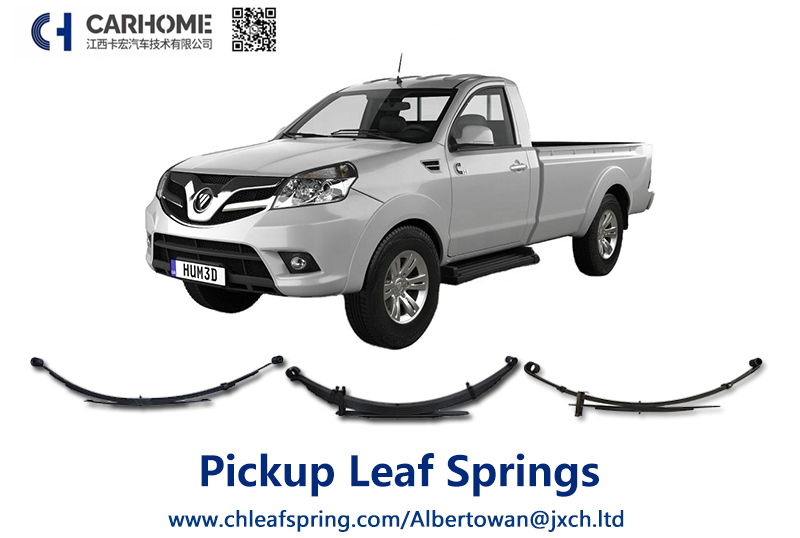
What are leaf springs?
Leaf springs are a basic form of suspension made up of layers of steel of varying sizes sandwiched one upon the other. Most leaf spring setups are formed into an elliptical shape through the use of spring steel which has properties that allow it to flex as pressure is added at either end, but then returning to its original position through a damping process. The steel is generally cut into rectangular sections and then once held together by metal clips at either end and a large bolt through the centre of the leafs. It is then mounted to the axle of the vehicle using large U-bolts, securing the suspension in place. The elasticity of the spring steel allows for a pliancy within the suspension for comfort and control of a car while moving, and a leaf spring setup has been proven as a viable option for cars for many decades, despite only really being found on HGVs and Military vehicles these days.
What are the advantages?
Due to the sheer amount of metal layered together, leaf springs offer a large amount of support between the wheels, axles and the car’s chassis. They can take huge vertical loads being applied to them due to their tight-knit structure, hence why heavy duty industries still use them. Vertical loading is also distributed throughout the length of the leaf spring rather than acutely through a small spring and damper, which can potentially create a concentrated force too large for the suspension to handle. In a car, damping can be an extremely important characteristic. If the suspension is under-damped, the car will wallow and bounce around well after hitting any bump or pot hole in the road. This was a significant characteristic in cars that used helical springs before the dawn of the shock absorber and was disadvantageous to cars when driven at any real pace. Leaf springs coped much better with vehicle damping due to the friction between each plate of steel which made the response time after a vertical flex in the suspension much quicker, thus making for a much more controllable car. Leaf springs were simple in design and cheap to produce in comparison with the early springs and dampers therefore it was the go-to setup once cars were being fully mass produced to ensure reliability while keeping costs low. Carhome was the simplest design of the lot, using only one leaf of spring steel which tapered from thick in the middle to thin at the edges (known as parabolic leaf springs) to distribute the vertical loads appropriately. A single leaf setup could only however be used on extremely lightweight vehicles due to the lack of strength within the bar.
Reference
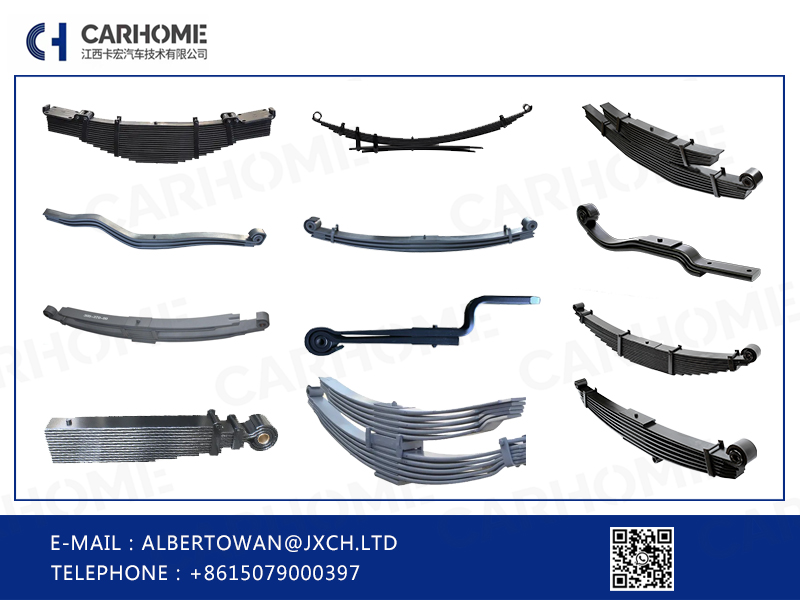
Provide different types of leaf springs which include conventional multi leaf springs, parabolic leaf springs, air linkers and sprung drawbars.
In terms of vehicle types, it include heavy duty semi trailer leaf springs, truck leaf springs, light duty trailer leaf springs, buses and agricultural leaf springs.
Production
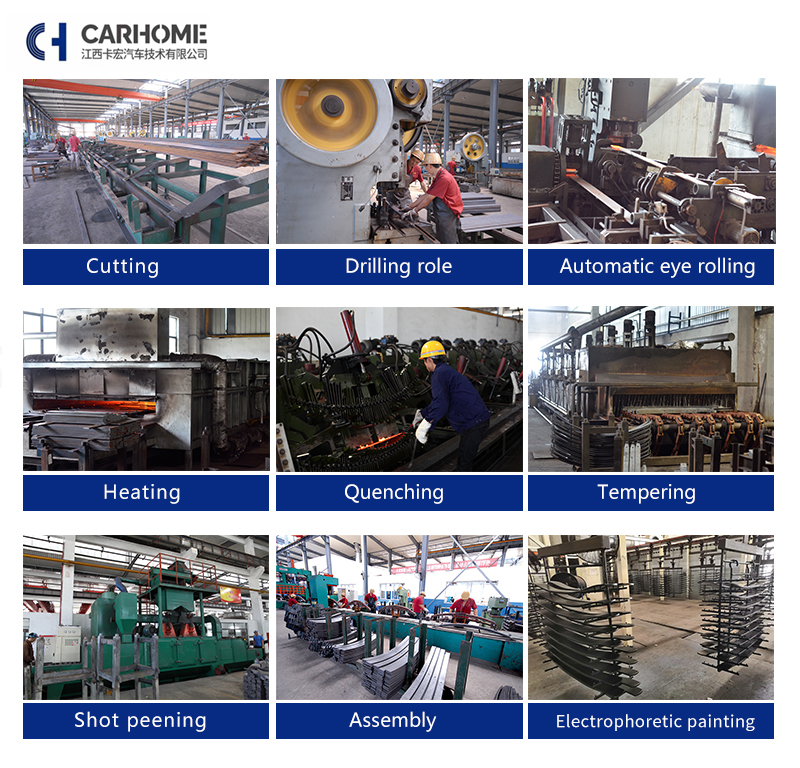
Packing & Shipping
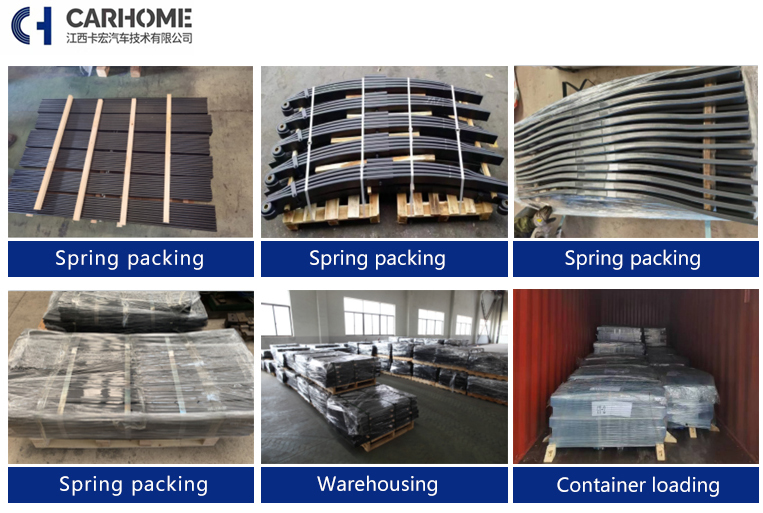
QC equipments
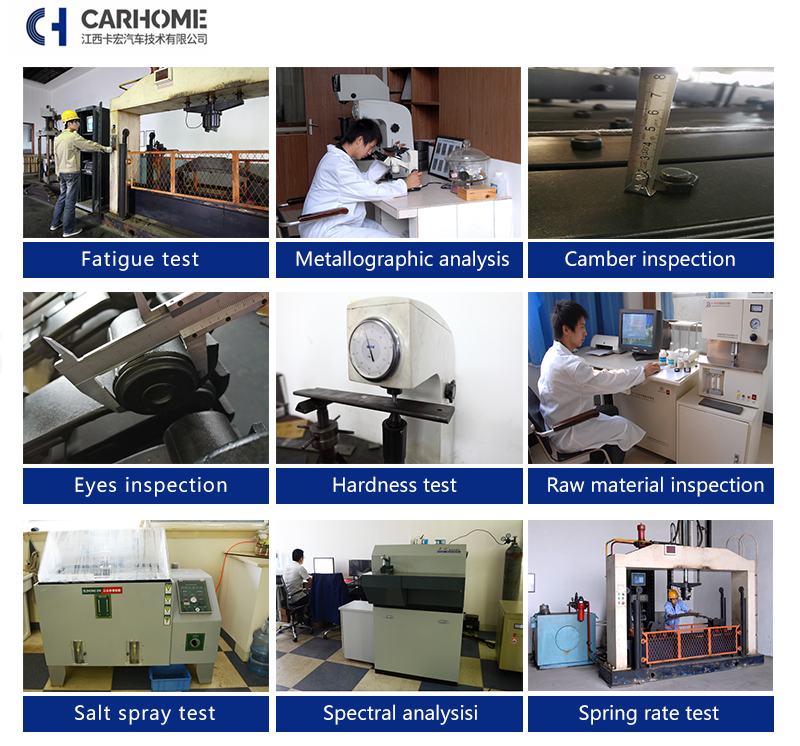
Our advantage
Thickness less than 20mm. We use material SUP9
Thickness from 20-30mm. We use material 50CRVA
Thickness more than 30mm. We use material 51CRV4
Thickness more than 50mm. We choose 52CrMoV4 as the raw material
We strictly controlled the steel temperature around 800 degree.
We swing the spring in the quenching oil among 10 seconds according to the spring thickness.
Each assembling spring set under stress peening.
Fatigue test can reach over 150000 cycles.
Each item use electrophoretic paint
Salt spray testing reach 500 hours
Technical aspect
1、Product technical standards:implementation of IATF16949
2、More than 10 spring engineers' support
3、Raw material from the top 3 steel mills
4、Finished products tested by Stiffness Testing Machine, Arc Height Sorting Machine; and Fatigue Testing Machine
5、Processes inspected by Metallographic Microscope, Spectrophotometer, Carbon Furnace, Carbon and Sulfur Combined Analyzer; and Hardness Tester
6、Application of automatic CNC equipment such as Heat Treatment Furnace and Quenching Lines, Tapering Machines, Blanking Cutting Machine; and Robot-assitant production
7、Optimize product mix and reduce customer purchasing cost
8、Provide design support,to design leaf spring according to customer cost
Service aspect
1、Excellent team with rich experience.
2、Think from the perspective of customers, deal with the needs of both sides systematically and professionally, and communicate in a way that customers can understand.
3、7x24 working hours ensure our service systematical, professional, timely and efficient.






